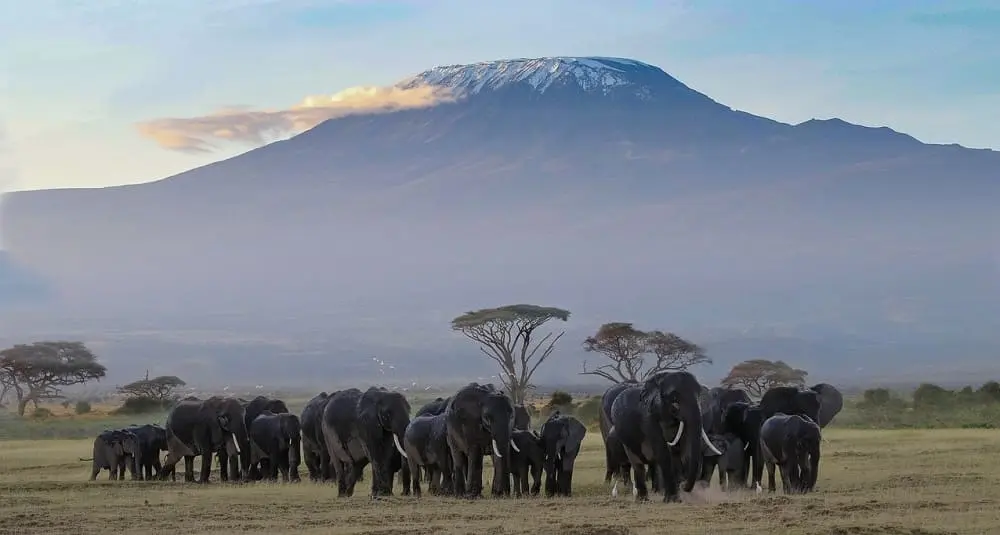What is Africa’s highest peak?
Last Updated:
Kilimanjaro, located in northeastern Tanzania, is Africa’s highest peak, culminating at 5,895 metres above sea level. This emblematic mountain is in fact a volcanic massif made up of three extinct cones, Shira to the west, peaking at 3,962 meters; Mawenzi to the east, reaching 5,149 meters; and Kibo in the center, of which Uhuru Peak is the highest point.
Kilimanjaro is particularly famous for its eternal snows and glaciers, which contrast with the surrounding African plains. However, these glaciers have been receding steadily since the beginning of the 20th century, mainly due to global warming and deforestation. Scientists estimate that these snows could disappear completely by 2030 to 2050 if current trends continue.
Climbing Kilimanjaro is a popular experience for hikers and adventurers from all over the world. Although the trek does not require technical mountaineering skills, it does represent a significant physical challenge due to the altitude and climatic variations. Climbing itineraries vary in length and difficulty, generally lasting between five and ten days, allowing hikers to traverse a diversity of landscapes, from tropical forests at the base to desert alpine zones near the summit.
Kilimanjaro is also an isolated mountain, meaning that it is not connected to any mountain chain. It is therefore the highest isolated mountain in the world. Its isolation and impressive height give it a majestic presence, dominating the surrounding plains and offering spectacular panoramic views.
Kilimanjaro’s flora and fauna are remarkably diverse, due to the different climatic stages encountered during the climb. At the base, the tropical forests are home to a multitude of animal species, including colobus monkeys and exotic birds. As the climb progresses, the vegetation becomes increasingly sparse, with moorland and areas of giant heather, until it gives way to a lunar landscape near the summit, where only a few adapted species survive.
Kilimanjaro is also of cultural and symbolic importance to the local populations, particularly the Chagga and Maasai, who live in its vicinity. It is often considered a sacred mountain and plays a central role in many local legends and traditions. Indeed, the name Kilimanjaro is of uncertain origin, but is generally interpreted as meaning White Mountain or Mountain of Greatness in local languages.
In 1973, Kilimanjaro National Park was created to protect the mountain and its unique ecosystems. The park is a UNESCO World Heritage Site and attracts thousands of visitors every year, eager to discover the natural beauty of the region and attempt a climb to the roof of Africa.
Kilimanjaro is much more than just a mountain. It is a symbol of Africa’s natural and cultural diversity, a challenge for adventurers and a source of inspiration for the peoples who live at its feet. Its majesty and uniqueness continue to fascinate and attract people from all over the world, eager to contemplate its snow-capped summit and experience the unique experience of climbing it.
You may also be interested in
geography

What is Africa's highest peak?
Answer
Kilimanjaro, located in Tanzania, is Africa's highest peak, culminating at 5,895 meters. This inactive volcano is famous for its eternal snow.